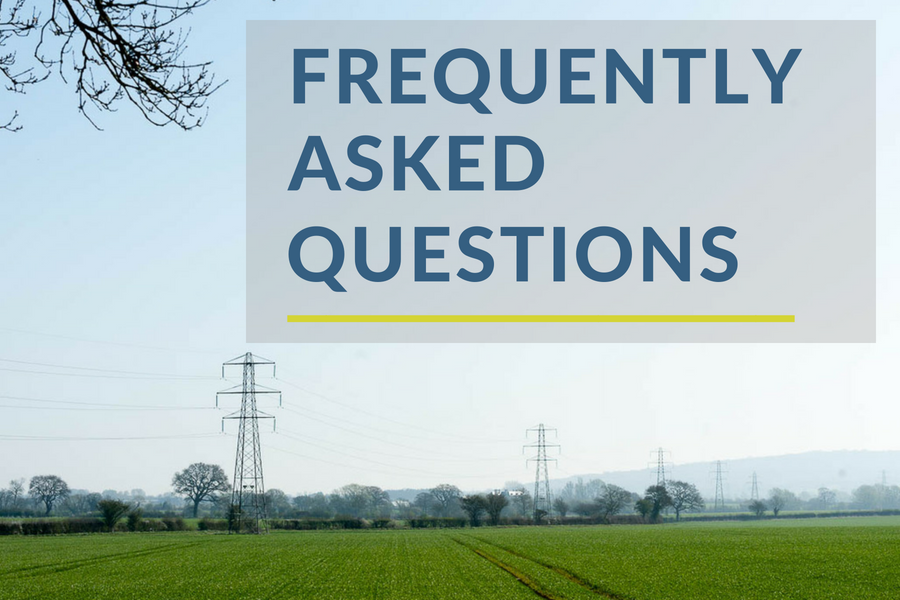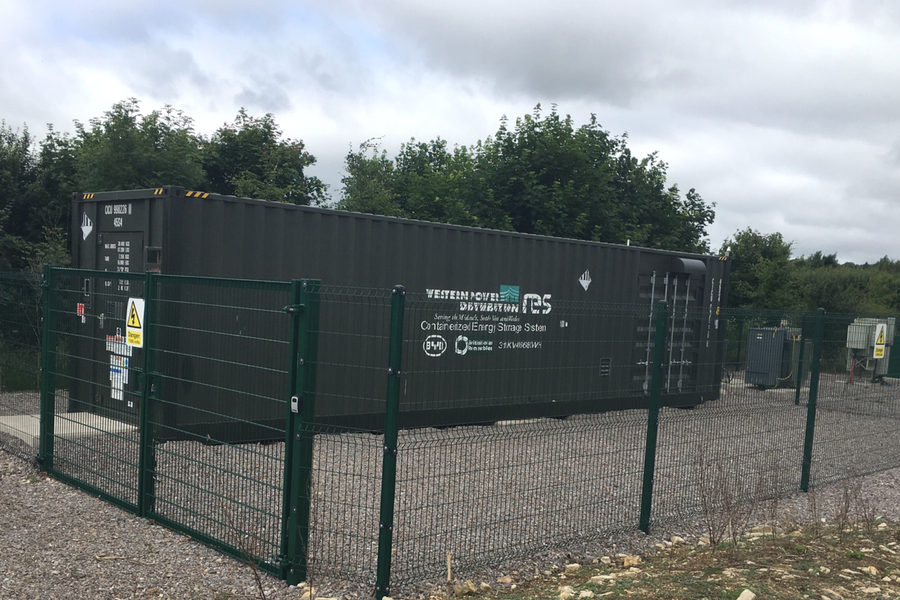Farm diversification income from energy projects – frequently asked questions
Published June 2018
A more recent (September 2020) version of this article appears here.
As rural landowners look to diversify and tackle the economic challenges post-Brexit, energy schemes can still offer those with viable sites a new income solution.
Hosting a battery storage or gas genset scheme on less than two acres of land can achieve ground rents of as much as £100,000 per year for a 25+ year lease term. Many rural landowners are exploring these attractive income opportunities, and some are lucky to secure high-paying schemes.
There is plenty of noise about battery storage, but landowners are advised to be open to other energy opportunities. Battery storage is not suitable for all parts of the electrical grid and other technologies, such as gas gensets or solar (for which the market has returned), may offer landowners better prospects.
We’ve compiled a list of answers to the most common questions we get asked to help landowners decide if they should explore opportunities for themselves.
I have three-phase electricity on site. Is that OK?
These large schemes need access to the 11,000 volt (11kV) network, as a minimum, and run separately to the low voltage three-phase circuits. Even if you don’t have power lines on poles or pylons crossing your land, you may still be closer than you think to an appropriate circuit.
The best sites are close to a 33,000 volt (33kV) circuit or have a primary substation (typically 33/11kV) or bulk supply point (typically 33/132kV) nearby. However, smaller schemes, typically up to 8MW, are better connected at 11kV and ideally, but not crucially, be under one kilometre from a primary substation.
We can identify these network assets using our local mapping tools and can see if there are underground power lines close by that you may not be aware of.
I don’t have gas. Does that rule out gas gensets?
You may not have a gas supply to your property, but you may have an underground gas main on your land, nearby or within a viable digging distance.
A gas genset scheme needs to be close to the gas grid at medium or intermediate pressure. Local high pressure can be suitable for larger plants. The gas pipeline also needs to be of a sufficient diameter.
There are other factors which make a good gas genset site too.
I’ve heard battery storage is the thing. I only want to look at battery storage.
If you are serious about earning money from a power scheme, you should look at all the relevant technologies – storage, gensets and solar. Site, local grid and market conditions will make some technologies more likely to be viable than others. The market for battery storage is not as strong as gas gensets at the moment. But this can change, so it is important to look at all the options to make sure you get the best outcome and returns.
I’ve identified a place where I’d like to put a scheme. Why do you need maps of my whole land holding?
You may have identified an unused part of your land that you think is suitable for a scheme. However, this area may not be suitable for a scheme due to its location or planning attributes. However, by moving the scheme across to the other side of your holding, you may be closer to a substation or an easier spot to dig for gas across your land, for example.
We like to look at your entire landholding to see if there are sites that offer you better or more viable opportunities. Even if your preferred site has the right attributes, your wider ground may enable a connection without recourse to expensive road dig or third-party land crossings.
What planning and location factors do I need to consider?
Brown field sites are preferred. For battery storage and genset schemes, areas around machinery stores, grain stores and livestock housing are good, but schemes are also regularly sited in green field locations. Landscape designations need to be considered and the site’s visibility from dwellings. You can find more about good sites for battery storage here.
I hear that the electrical grid is constrained. Is there capacity in my area?
A grid connection is key, and the viability of a scheme depends on there being spare capacity on the local part of the network. There are pockets of capacity in some areas. Solar, gensets and storage each have different impacts on the grid, and if capacity is available locally, it might only be suitable for one of these technologies.
Using our mapping tools, we assess your local the network for capacity and we liaise with the engineers at your local Distribution Network Operator (DNO). Network reinforcements, network reconfigurations, flexible connection arrangements and schemes releasing capacity can all enable connections but unearthing these valuable opportunities takes skilled and detailed conversations with the system planners at your DNO.
What rental income could I expect?
For those lucky to get a scheme, ground rent prospects vary depending on grid connection costs, market conditions and if the site is put to more than one developer to attract competing offers. Ground rent is calculated per megawatt (MW). The current market for battery storage is around £2,000 per MW per annum. Gensets are between £2,000 and £3,000 per MW per annum. Sites are typically from 2MW to 50MW. Leases are generally 25+ years.
There is developer appetite for solar sites of at least 10MW, which require upwards of 40 acres. We would expect ground rents of around £750 per acre for leases of 25+ years.

What does a scheme look like?
A typical battery storage scheme is under one acre comprising multiple 40-foot shipping containers. A typical gas genset scheme takes around a half to two acres of ground. We’ve put a photo of a gas genset site (top) and a battery storage scheme (bottom) in this post.
The current market for solar sites favours very large schemes but appetite for smaller sites is growing and some developers will consider good 10MW connections with suitable ground of around 40 acres.
How long does the process take?
Our Stop/GoTM feasibility studies currently takes around 4 to 6 weeks. If we believe you have a genuine opportunity for a scheme, we can prepare and submit a grid application as soon as we have your authorisation. The DNO then has 65 working days to provide a grid connection offer.
If the grid offer is viable, we invite the best performing developer-operators to bid for your site. This can take up to 3 months. Legal and contractual proceedings, planning applications, funding, procurement and the grid connection can take some time. Our clients’ schemes have taken anywhere from between 12 months to three years to lease execution.
Will we be tied into a contract with you?
No, you aren’t tied into us. If our Stop/GoTM feasibility study suggest you have a viable opportunity for a scheme, we’d like to help you further by applying for a grid connection on a no-win no-fee basis. We believe our skills, expertise and motivations are such that we represent your best chance of achieving the most valuable grid offer possible.
If we do achieve a viable grid offer, we will market your site to the best-performing power scheme developer-operators to get you the most competitive and appropriate offers. Approaching more than one developer and operating under Roadnight Taylor’s unique legal framework puts you and your agent in the best position to negotiate the best deal. (Roadnight Taylor does not negotiate option and lease terms, but will support your agent in this regard).
How can I find out if I have a site for a potential battery storage or energy scheme?
In our Stop/GoTM feasibility study we look at all the factors necessary for a scheme and work with the engineers at the DNOs to establish if it is worth submitting a grid application, for what technology and at what scale. We always back our recommendations and will prepare, submit and manage grid applications on a success-only basis.
If you have any other questions, please don’t hesitate to give our team a call.
 Contact us
Contact us
To find out more about our Stop/GoTM study to determine if you have a farm diversification income opportunity from an energy scheme, please call us now on 01993 830571 or send us a message via our contact form.



 Contact us
Contact us